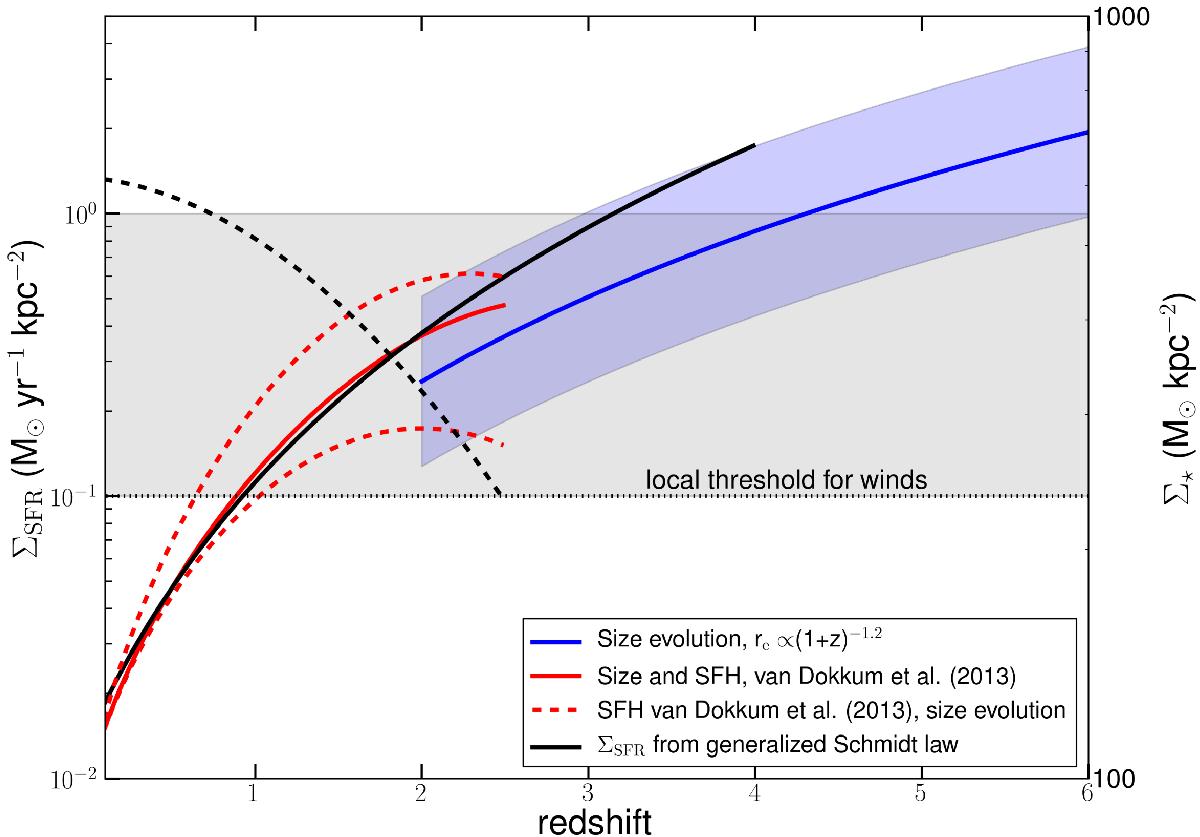Fig. 3

Star formation intensity (ΣSFR, in M⊙ yr-1 kpc-2) as a function of redshift. The evolution of the generalized Schmidt law (black line) compared to the evolution of abudance-matched star-forming galaxies (i.e., galaxies with co-moving number densities like that of MW mass galaxies in the local Universe) for several types of size evolution (re = 3.6(M⋆/ 5.0 × 1010)0.27 – solid red line; re = 3.6(1. + z)-0.55 – upper red dashed line; re = 3.6 kpc – lower dashed red line; see van Dokkum et al. 2013, for details). We also show the evolution of the star formation intensity for high redshift galaxies with an sSFR = 2 Gyr-1, a stellar mass of 5 × 109M⊙, and a size evolution, re = 2.5((1 + z)/3)-1.2 kpc (blue line and shaded region representing a scatter of ±0.3 dex; see Oesch et al. 2010; Mosleh et al. 2012). The evolution of the stellar mass surface density, Σ⋆ (M⊙ kpc-2; right hand ordinate) of MW-like galaxies (black dashed line) is a factor of about 3 but includes the growth of the bulge as well as the disk (van Dokkum et al. 2013). We also indicate (dotted line) the star formation intensity threshold for local starburst galaxies to drive winds and indicated the possible range of thresholds from local and distant galaxies (Lehnert & Heckman 1996; Heckman 2003; Le Tiran et al. 2011b; Newman et al. 2012a).
Current usage metrics show cumulative count of Article Views (full-text article views including HTML views, PDF and ePub downloads, according to the available data) and Abstracts Views on Vision4Press platform.
Data correspond to usage on the plateform after 2015. The current usage metrics is available 48-96 hours after online publication and is updated daily on week days.
Initial download of the metrics may take a while.


